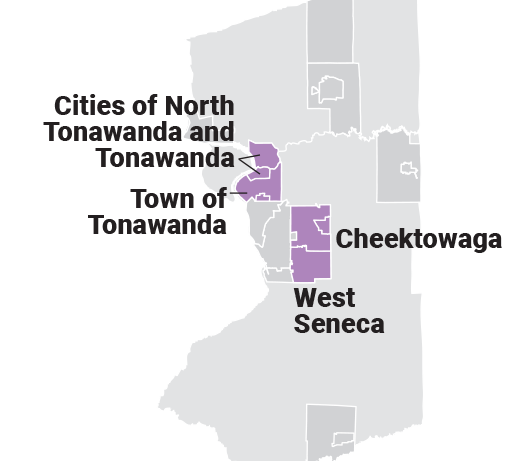Median Home Value, 2017
$104,800

Cheektowaga residents experience poverty at lower rates than the region overall. But as the region’s third largest municipality, Cheektowaga still has many individuals and families in need. Some of the greatest economic threats to community residents are high housing cost burdens, low education levels, limited access to good-paying jobs, and keeping up with the costs of owning a car.
Click here to learn more about what living in or near poverty means for individuals and families.
Vulnerable populations, % living in poverty, 2017
Source: American Community Survey.
Source: American Community Survey.
Source: American Community Survey.
Source: American Community Survey.
Source: American Community Survey.
Source: American Community Survey.
| Rank | Employer |
|---|---|
| #1 | Wegmans |
| #2 | Tops Friendly Markets |
| #3 | Osmose Utilities Services Inc. |
| #4 | PCB Piezotronics Inc. |
| #5 | Walmart Supercenter |
| #6 | Center-Hospice Palliative Care |
| #7 | Sodexo |
| #8 | Buffalo Niagara International Airport |
| #9 | Derrick Corp |
| #10 | Cameron Compression Systems |
Source: Various. See Data Sources and Notes.
| Cheektowaga | Buffalo Niagara | |
|---|---|---|
| Total Jobs | 47,910 | 547,851 |
| Earnings <$15k/yr | 15,216 (32%) |
150,324 (27%) |
| Earnings $15k-$40k/yr | 16,009 (33%) |
178,599 (33%) |
| Earnings >$40k/yr | 16,685 (35%) |
218,928 (40%) |
Source: US Census Bureau, LEHD.
$104,800
$802/mo



Over 200 human service providers and leaders use Numbers in Need to find information, build partnerships, pursue funding and advocate for their community.
“This data has been instrumental in finding what our community looks like and what obstacles we need to tackle to move ahead.”
“I have repeatedly and often share this data with colleagues and community members.”